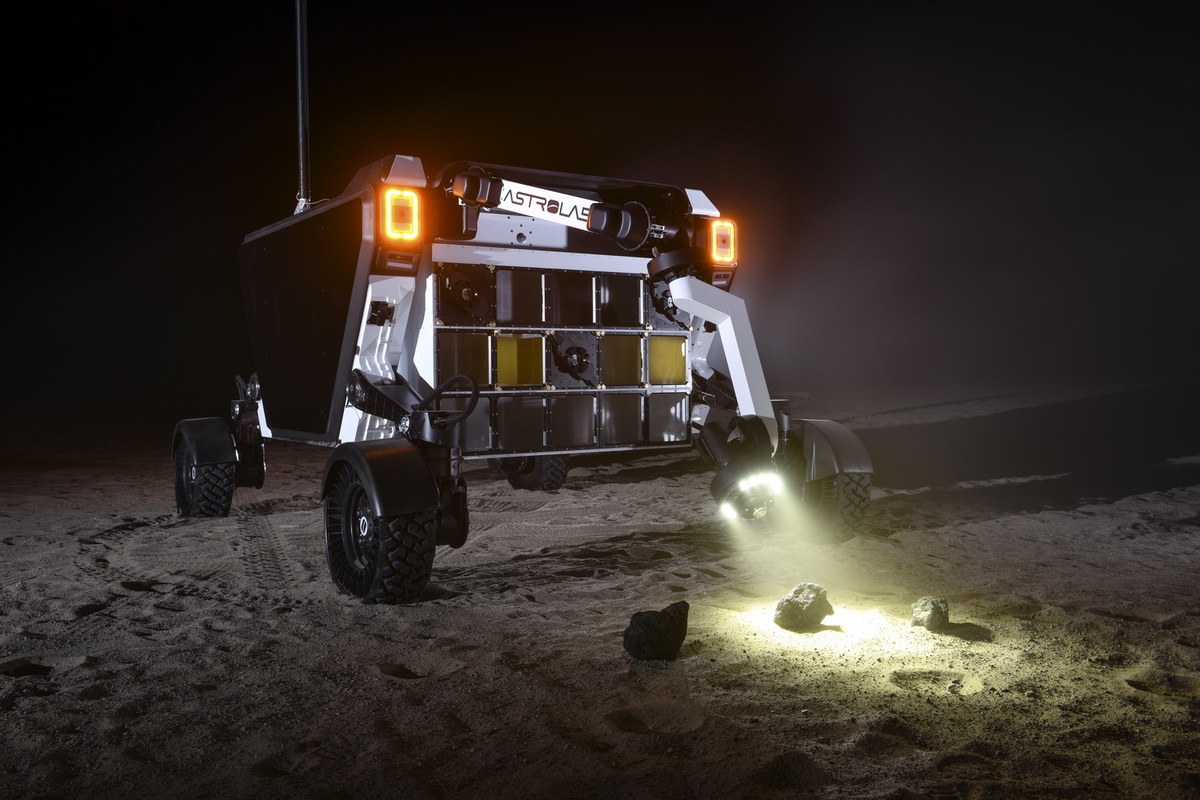WASHINGTON — Lunar rover developer Astrolab has signed an agreement with SpaceX to transport its first rover to the moon on a future Starship flight.
Astrolab said it has arranged to fly the Flexible Logistics and Exploration (FLEX) rover it is developing as a payload on a Starship lunar lander mission scheduled for as soon as mid-2026. The companies did not disclose the value of the agreement, which Astrolab says is the first commercial contract SpaceX has signed for lunar cargo delivery.
Jaret Matthews, founder and chief executive of Astrolab, said in an interview that the mission, which will include 1,000 kilograms of customer payloads, will be the first flight of the FLEX rover. It will be a rideshare payload on a Starship mission landing somewhere in the south polar region of the moon.
“Because our rover can traverse up to a couple thousand kilometers in a given year, we’re less sensitive to exactly where we land,” he said. “’It is definitely optimized for the south polar region because that’s fundamentally where we think that the bulk of the activity is going to be.”
Astrolab has not disclosed specific customers for the mission, but he said they have a variety of planned applications, from resource utilization to data. “We are taking care of the core functions of mobility, navigation, communication and power, and that allows them to really focus on whatever they want to specifically achieve,” he said, adding that Astrolab expects to announce details about its customers in the coming months.
The company unveiled its plans for FLEX a year ago after performing tests of a prototype in the California desert. The design is now at about the preliminary design review stage of maturity, Matthews said, with a particular focus on a robotic arm for the rover that has six degrees of freedom for deploying instruments or other payloads.
He emphasized the benefits the rover’s modular design provides to potential customers. “This modular concept allows us to have adaptive utility,” he said. “You land new implements or new cargo over time, and it refreshes, it renews what you can do with the platform. That’s our big differentiator.”
Astrolab is preparing to offer FLEX to NASA for the agency’s upcoming Lunar Terrain Vehicle (LTV) competition. NASA is expected to issue a call for proposals by May for the LTV, which will be used by astronauts on missions starting with Artemis 5 in the late 2020s as well as be able to be controlled robotically between human landings.
“We’re excited about that program It’s well aligned with what we’re doing,” Matthews said. “We are certainly going to throw our hat in the ring.” He added that he hopes that NASA pursues a services model for the LTV program, much as it has done with the Human Landing System landers.
Astrolab now has more than 20 full-time employees along with strategic partnerships that he said allows the company “to punch well above our weight” particularly for the upcoming LTV competition, where major aerospace companies like Lockheed Martin and Northrop Grumman have announced plans to offer rovers to NASA. “That’s going to allow us to be first to market with this service.”
Astrolab has not disclosed how much money it has raised, but Matthews raised the possibility of being able to fund development of FLEX through customer contracts. “We’re hoping that that revenue stream will allow us to execute on this plan, perhaps without necessarily have to raise,” he said. But, he added, “to the extent that investors are interested in what we’re doing, we’re more than happy to talk to them.”
